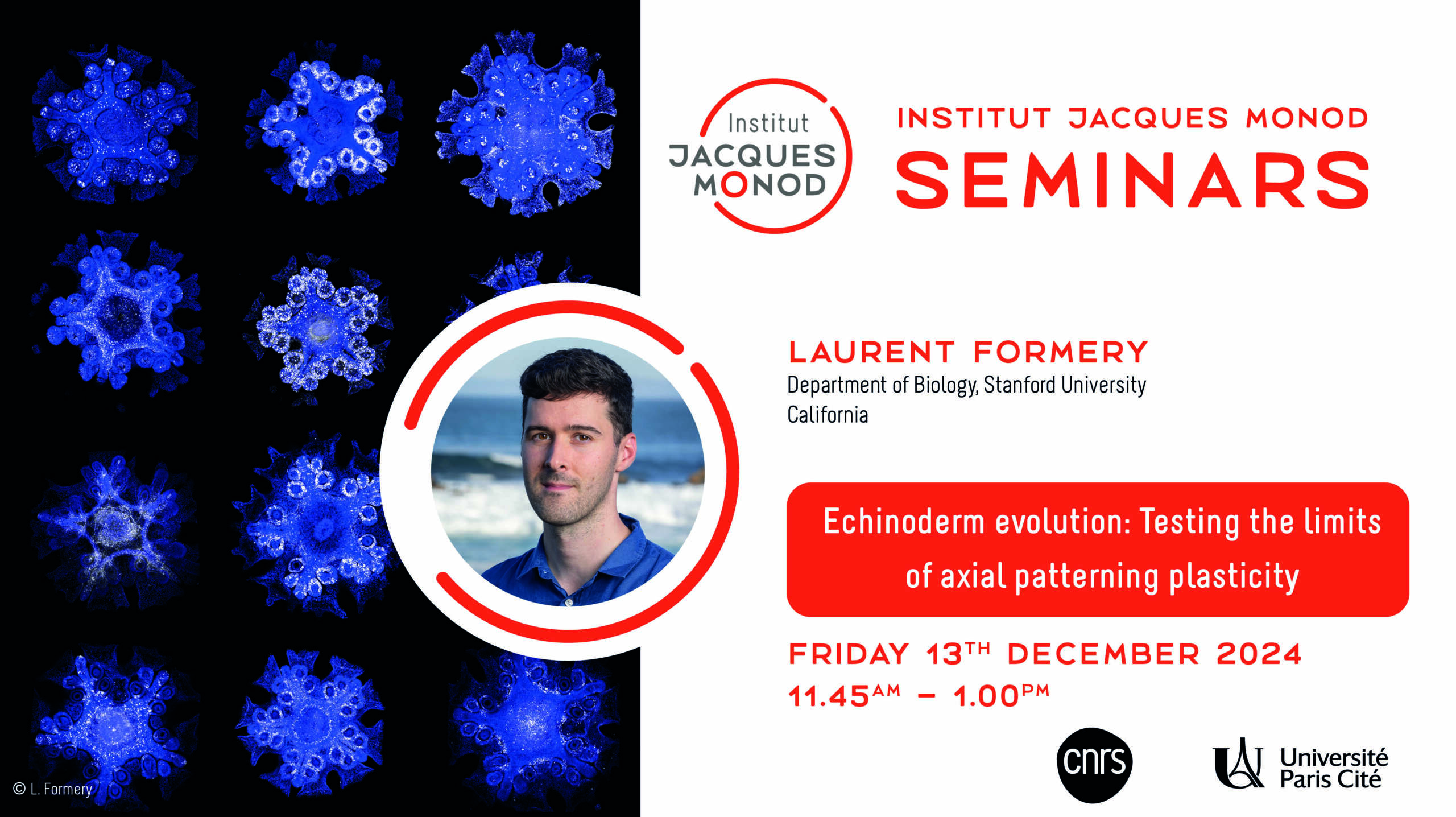
- Cet évènement est passé.
Séminaire de l’Institut Jacques Monod – Laurent Formery
13 décembre 2024 - 11 h 45 min - 13 h 00 min

Invité par l’équipe Gazave, Laurent Formery (Department of Biology, Stanford University) présentera un séminaire de l’Institut Jacques Monod sur le thème :
Echinoderm evolution: Testing the limits of axial patterning plasticity
Résumé :
The discovery that distantly related animals establish their body plans through conserved developmental programs is one of the most transformative findings in evolutionary biology. Similar antero-posterior (AP) and dorso-ventral (DV) patterning programs have now been identified in a large sample of bilaterian animals. However, because most of the species that we have investigated so far follow the basic blueprint of the bilateral symmetry, it remains unclear whether, in case of drastically divergent body plan evolution, these patterning program are flexible enough to support major deviation from bilateral symmetry, or if they act as developmental constraint on body plan diversity that need to be disassembled first. My research aims to investigate this question using echinoderms, which evolved a unique pentaradial symmetry and represent a fascinating natural experiment on body plan plasticity. By looking at adult body plan development in sea stars, brittle stars and sea cucumbers using modern molecular tools, I have been able to identify that some part of the antero-posterior patterning program are highly conserved during the formation of the pentaradial body plan, albeit in an unexpected spatial configuration. This indicates that despite the absence of a morphological AP axis, the molecular system used for AP patterning is surprisingly tolerant to radical morphological changes. With these new molecular data, we are now starting to piece together the evolution of axial properties across echinoderm classes and with their bilateral relatives. Beyond the fascinating history of this particular phylum, these data are important to decipher to what extent conserved molecular programs have shaped the evolution of morphological novelty.

